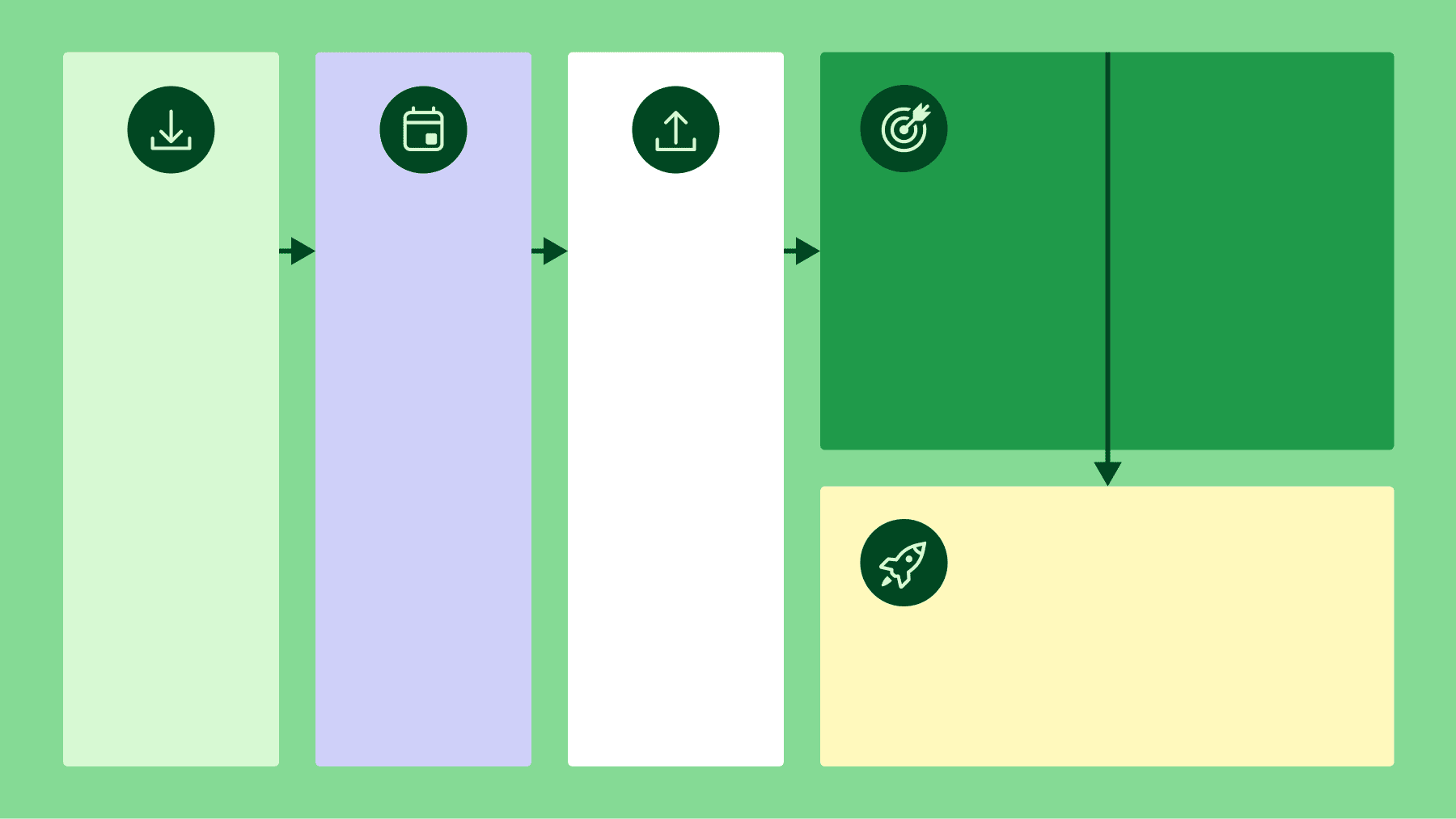Sales receipts are key to keeping track of a business’s operations and finances. When you make a sale, you must document it and provide the buyer with proof of purchase.
Business owners and sales professionals often overlook sales receipts because they are so commonplace. However, having easy-to-read, consistent sales receipts will make your life much easier and ensure you remain compliant with tax laws.
Branded sales receipt templates can also help your business look professional to your customers.
In this article, we’ll explain why sales receipts are important to businesses and customers, how they differ from invoices and what information you need to include in your receipts.
Free sales receipt templates (Word and Excel)
If you know everything you need to know about sales receipts, look no further. Here are some editable, printable blank sales receipt templates you can use to get started.
Download your free sales receipt templates here
Both work as small business sales receipt templates.
Bear in mind that a sales receipt format (or payment receipt template) is different from an invoice template. If you’d like to find out more about sales receipts, including the difference between sales receipts and invoices, read on.
Key takeaways from this sales receipt template article
What’s in the article: This article covers free sales receipt templates, their importance, types, necessary information and tips for creating effective receipts.
Why they matter: Sales receipts document transactions, protect against scams, support bookkeeping, aid inventory management and ensure tax compliance.
Pipedrive’s tools integrate with Quickbooks for seamless receipt management and offer Smart Docs for creating and tracking receipt templates. Try Pipedrive free for 14 days.
Why you need sales receipts
Sales receipts are a bill of sale record that proves the buyer has paid for the goods or services you rendered for them.
It is a legal requirement for retail businesses to offer to provide customers with receipts after a purchase for many reasons.
They provide customers with evidence of sale
This is important for a few reasons. Firstly, the customer may need proof of purchase for tax deductions, like if they purchased items as part of their work.
It also enables them to return a faulty or unwanted item, and it serves as a reminder of what they purchased in case they want to buy more of the same items.
They protect retail businesses from false return scams
Attempting to return stolen items or items that were purchased elsewhere in exchange for store credit or money is a common scam. Businesses can avoid this situation by requiring receipts to make returns because they are proof of payment.
They enable businesses to record sales for bookkeeping
As simple as it is, sales receipts provide documentation of sales activities for businesses. This helps them to track their financials, monitor their revenue over a period and budget accordingly.
They are required to record sales for tax purposes
Most countries require sales receipts to prove cash flow for tax reasons. Businesses must pay taxes based on their sales, which means they must comply with stringent record-keeping laws.
Sales receipts provide a physical trail that demonstrates your sales records over a period in the case of an audit.
They help businesses manage their inventory
Paired with a digital transaction system, a record of which products were sold at which times helps businesses with sales tracking. Sales tracking enables them to assess product demand and forecast product orders accurately.
The difference between an invoice and a sales receipt
Sales receipts and invoices are often confused because of their similar appearance, but they serve two related but distinct purposes.
An invoice is given to a customer to request payment for goods and services that were rendered. This happens before the customer has made a payment. Due to this, an invoice often contains some extra information, such as payment options and a deadline.
A sales receipt is given to a customer after payment to prove that they have paid for the goods and services.
Both of these are different from a sales order form, which is a form you create to confirm the order of goods or services to a customer.
5 types of sales receipts
Due to the variety of businesses, products and services, no single receipt format is universally applicable. For instance, a sample sales receipt form for a car sales receipt will look completely different from an enterprise software sales receipt template.
Instead of distinguishing by industry, you can categorize sales receipts by purpose. Here are a few sales receipt samples that businesses might use for different purposes.
1. Cash register receipts
Arguably the most common form of receipt, these are the printable sales receipts that cash registers (or EFTPOS machines) print out after a sales transaction. They describe the items bought with their prices, the total paid amount, the payment method and the time and date that the purchase occurred.
2. Handwritten receipts
Salespeople prefer handwritten receipts in industries where sales occur in person, such as with tradespeople who need to create receipts on the jobsite.
Usually, a salesperson will carry a receipt book full of blank receipt forms. Salespeople can fill these paper receipts out on the spot with information about item purchases, their cost and how much the buyer paid for them.
3. Carbon copy receipts
Carbon copies are duplicate pieces of carbon paper that trace handwritten receipts onto another slip. These enable salespeople to provide buyers with a handwritten receipt while retaining a copy for themselves.
4. Packing slips
A packing slip is the cash receipt that’s included in a package. In addition to the usual information, a packing slip will include shipping details as well as instructions about how to make a return.
5. Digital receipts
Digital receipts are identical to physical receipts but exist as digital documents that salespeople send to customers via email. With many businesses (like ecommerce companies) operating solely online, digital receipts are becoming far more common.
The good thing about digital receipts is they can integrate easily with sales CRM and pipeline management software. Pipedrive, for example, integrates with Quickbooks so you can see which sales receipts are attached to which deals and accounts.
You can also use Smart Docs, Pipedrive’s sales document creation and management platform, to create a receipt-of-sale template and track contact interaction with them.
What to include in a sales receipt
The details you include in your template for sales receipt creation are largely industry-dependent. However, certain necessary information should be included in every receipt.
Generally, there are two main sections in a sales receipt:
The header
This section contains information about the origin of purchase – the merchant or retailer. The main purpose of this section is to provide information about the business and place and purchase time.
Receipt number. This is essentially the purchase order number. The receipt number makes it easier for the salesperson (or company) to keep track of particular purchases.
Date of purchase. The timestamp helps track receipts in the case of a return or audit.
Merchant information. This should include the company name, phone number and address of the business. The address can be either the company headquarters, a key person in authority or the branch of purchase.
This provides the customer with a means of contacting the business if need be and also acts as proof that they purchased the items from a particular vendor.
The purchase information
This is the main part of the sales receipt, which contains all of the information about the buyer and product or service. The purpose of this section is to describe the goods or services that the buyer purchased in detail.
Buyer information. Some receipts do not need to include buyer information, such as those you get from supermarkets with cash payments. However, depending on the type of purchase, more information may be required – especially if it’s a complex or expensive purchase.
In this case, the buyer’s full legal name may be included, as well as their home or business address. Likewise, if you want to track your sales by customer, you should include it.
Product or service details. Again, this will vary depending on the nature of the product or service. The information that needs to be documented includes a description of what was purchased, the number of goods purchased and the unit price.
Payment details. The final section includes information about the price and method of payment. This section should include the cost subtotal, any discounts applied, the sales tax (for example, VAT or GST), the total amount and the payment method. Depending on the payment method, additional details may be required, such as the credit card number or bank account information.
How to create a great sales receipt
Sales receipts are simple, everyday documents, but that doesn’t mean they have to be bland. A great template can make your receipts look more professional, increase readability and improve your customer’s overall experience.
Here are some things to consider when designing your sales receipt form.
Include branding
Your sales receipt should feature your logo. Other things to consider include the colors, font and your brand slogan (if you have one).
Branding not only helps to keep your company in your customer’s thoughts, it also helps them organize and keep track of their receipts.
Pay attention to detail
A great sales receipt template has all of the required fields so that you can fill it out as quickly as possible.
For example, if you’re a landscaper, you may wish to include fields for yard size, services rendered (like mowing or weeding) and price per square foot for each service. Clearly label each section so that it can be referenced quickly.
Make it easy to read
The more accessible your receipt is, the better it is for the person filling it out and for the person reading it.
For digital receipts, use easy-to-read fonts at a reasonable size and present all of the information in a pleasing manner.
For handwritten receipts, try to write neatly to avoid confusion later on. The better your design, the easier this will be.
Final thoughts
Giving your customer a sales receipt is the final step in the sales process before you begin nurturing that relationship for future sales.
Making your sales receipts attractive and easy to read makes them easier to catalog and track down if need be. It also makes you appear more professional and organized, helping them decide to do business with you again.











